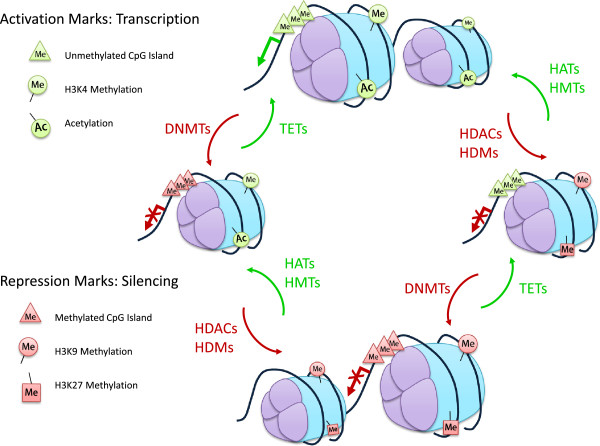Figure 1.

Double Lock Principle. A gene will be transcribed when it is in the open or “unlocked” state. The promoter region is demethylated, histones acetylated and H3K4me marked. If the gene is silenced, in a closed or “locked” state, DNA methyltransferases (DNMTs), histone deacetylases (HDACs), histone methyltransferases (HMTs) and histone demethyltransferases (HDMs) have modified the promoter region, removing the histone acetylation and modifying methylation accordingly. For the gene to be transcribed, the repression marks will need to be lifted to confer the open, “unlocked” state, by the TETs (removal of methylation on the promoter), histone acetyltransferases (HATs) and the HMTs/HDMs. If the DNA exists in any in-between state, with only partial silencing or activation marks, the gene remains repressed, hence the term “Double Lock”.
